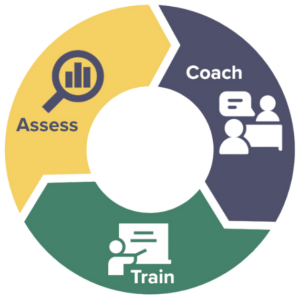A diversity, equity, and inclusion (DEI) audit should be the first step in any organization’s DEI journey. The audit allows the company to understand where they are starting from and learn where they want to go. The findings of the audit should guide the goals and strategic priorities of the DEI office.
Listening sessions are a critical part of any company-wide DEI audit. They provide deeper insight into employee perception of DEI at your organization. When conducted correctly, they can help pinpoint what your company is doing well and what challenges need to be addressed in priority order. However, there are several best practices practitioners must embed to ensure credible input is collected.
What is a Listening Session?
A listening session is akin to a focus group used in marketing or education research. Whereas a focus group might ask about an experience with a product or service, a listening session seeks to understand employee sentiment around company culture. Another important distinction is that focus groups may be conducted in-house, while listening sessions should be conducted by a third party whenever possible so participants feel able and comfortable to share freely.
Participants in a listening session are asked to talk about their experiences inside the company, with several questions posed by the facilitator around culture, belonging, and DEI efforts. The end goal is to understand the strengths, opportunities, and challenges surrounding DEI as perceived by staff.
Listening sessions typically last one hour and should include no more than 20 participants. They can occur in person or virtually, and we recommend that only active participants, the facilitator, and a notetaker attend the session.

The Importance of Third-Party Facilitators
Having a third-party facilitator conduct listening sessions is paramount to gaining unbiased input. Not all employees feel comfortable raising concerns or providing open feedback to internal personnel, especially their supervisor or company leadership. They may worry about facing retaliation for stating their concerns or may even have stories that involve the would-be internal facilitators. Employing a third-party facilitator helps foster a safe space.
While third-party facilitators may have some idea of how DEI is going at the organization, they are less likely to bring in their own opinions than an internal facilitator. For instance, if the leader of an employee resource group (ERG) is leading sessions, they likely have a specific viewpoint on the impact of ERGs. If a session participant expresses confusion about an ERG’s purpose, the ERG leader may feel inclined to push back or brush it off as unimportant. Third-party facilitators enable unbiased facilitation of the conversation and unbiased interpretation of the results.
The Role of the Listening Session Facilitator
The listening session facilitator has the ability to open the group up to robust and transparent discussion, but can also quickly shut down inappropriate or off-topic sharing. The primary role of the facilitator is to serve as a guide to participants: to pose questions, ask follow up questions, and ensure understanding of key points. They should allow active participation and opportunity for input while encouraging participants to share the microphone. For instance, if one person takes up too much space, the facilitator might ask others for input or politely ask the participant to allow others the opportunity to chime in.
The facilitator should remain aware of any group dynamics and should ensure an environment of mutual respect and safety. The facilitator should ask clarifying questions when given information, rather than assuming meaning or intent. And finally, the facilitator should aid the notetaker in capturing important information. Because the facilitator is deeply embedded in the conversation, we recommend that a separate individual takes notes, to limit distractions. However, the facilitator can and should reiterate key points and draw attention to comments the notetaker should jot down.
Sample Listening Session Questions
As a best practice, listening session questions should be open-ended. You should also aim to avoid leading questions. A few sample questions are listed below.
- How are you feeling about Diversity, Equity, and Inclusion at __________ (organization)?
- Do you feel like you belong at __________ (organization)?
- What is __________ (organization) doing well in regard to Diversity, Equity, and Inclusion?
- What could __________ (organization) do better from a Diversity, Equity, and Inclusion perspective?
- What challenges within the__________ (organization’s) culture are you hearing from your peers?
- Would you recommend _______(organization) to your friends as a good place to work? Why or why not?
Incorporating listening sessions into your DEI audit process can yield valuable insights that inform your organization’s efforts to promote diversity, equity, and inclusion. By following best practices and prioritizing open, unbiased communication, companies can create a more inclusive and supportive workplace for all employees.
Interested in having our team facilitate listening sessions for your organization? Learn more.
Kaela Sosa is co-founder and Manager, Curriculum and Programming at The Diversity Movement. Her expertise includes psychology, gender identity and sexual orientation and racial identities. Kaela has written and spoken about a range of topics: active allyship, the inclusive talent lifecycle, disability etiquette, LGBTQ+ inclusion and inclusive language. At The Diversity Movement, she leads the development and execution of learning programs, including digital learning, online courses, certificate programs and certification opportunities. Connect with or follow Kaela on Linkedin to learn more.












